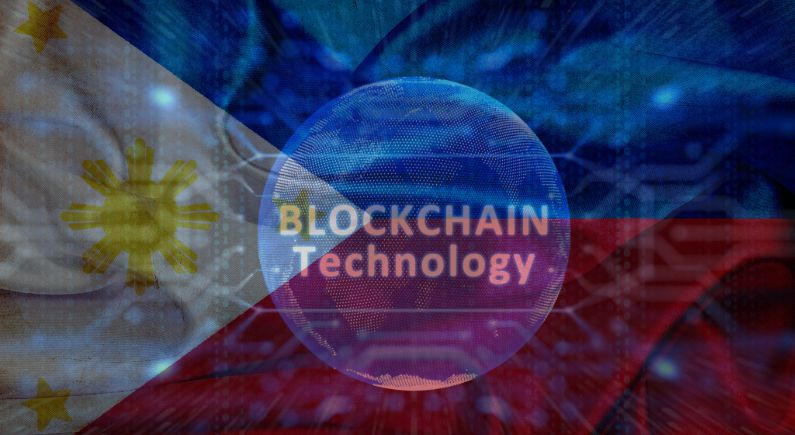Demystifying Decentralization
Ian Gauci is the managing partner at GTG Advocates and Caledo.
He lectures on Legal Futures and Technology at the University of Malta. Here he writes on decentralisation. Decentralization is not a new concept. It has been used in strategy, management, and the government, for a long time. The word decentralization came into usage in the mid-1800s. Tocqueville would write that the French Revolution began with “a push towards decentralization” which ultimately resulted in “an extension of centralization.” According to him, both centralization and decentralization, share the same problem since they are defined by different people in different ways and not necessarily in an accurate way. It even finds place within European integration and the subsidiarity principle under Article5(3) of the Treaty on European Union (TEU) and Protocol (No2) on the application of the principles of subsidiarity and proportionality. In areas in which the European Union does not have exclusive competence, the principle of subsidiarity decentralizes the decision-making power to the Member States.
Since the 1980s, developing countries have increasingly adopted various decentralized forms of governance. Decentralization in this instance could entail transferring certain powers and functions to agencies or councils, (‘deconcentration’), lower levels of government (‘devolution’), or semi-autonomous authorities (‘delegation’). There is also no standard model of decentralization.
Notions and visions espousing technology-driven decentralization and the accompanying democratization of socio-economical structures circulated with increasing ubiquity, from the Californian counterculture of the 1960s, 1970s, particularly in the German-speaking countries, where, given the influence of Bertolt Brecht’s radio theory and Hans-Magnus Enzensberger’s “Constituents of a Theory of the Media”, they were linked to the then new media. The inception of videocassette system, where individuals could record, share and listen to media they choose, at that time where public broadcasting by the state dictated what media could be consumed, heralded the end of the classic mass media and the advent of novel options for the public “to participate directly in essential decisions”.
The promise of decentralization emerged again with the internet and digital technology. These were meant to lead us to a decentralized society along with the eradication of central roles and hopes for equality, transparency and redistribution of powers in a more democratized society. The creation of dominant players like Google, Amazon and Facebook, control and use of DNS as well as ICANN’s control on domain names amongst other things tainted this vision. The inception of cloud technology also heralded a new era of decentralization, albeit the decentralization happened on the hardware part but not on the core control functions.
The shift to the digital economy and blockchain technology have however infused new hopes of decentralization, promising to transform finance, money and even governments through distributed trustless consensus, which allows to determine the validity of transactions without the need of any intermediaries in a transparent and secure way. With Bitcoin and the advent of blockchain technology, this model has changed and now the technology exists, which allows anyone to start a decentralized system and having to operate it with no single point of failure or single trusted authority.
Copious articles and literature abound heralding a libertarian and totally decentralized form of governance, devoid of any form of centralized elements, functions, and the decentralization of corrupt socio-economic structures solely through technology. However, the current debate on centralization versus decentralization often overlooks the complexity of the socio-technical ecology we inhabit, and the fact that it is ultimately dominated by human behaviour. It also gives little consideration to the possibility of an expansion, conversion, consolidation and cooperation or layering of existing socio-economic structures, instead of their total displacement. Regrettably people most of the time also conflate and confuse the terms disintermediation, distribution and decentralization.
Let’s clarify the definitions first and start with disintermediation. The latter can be explained with the aid of an example. Imagine that you want to send money to a friend in another country. You go to a bank who, for a fee, will transfer your money to another bank in that country. With blockchain technology, it is possible to send this money directly to your friend without the need for a bank. This way, the intermediary function carried by bank, is no longer required, and the you have
disintermediation
.
This leads us to, decentralization and distribution. Information and Communication Technology (ICT), Governments and other enterprises like banks and other private institutions have conventionally been based on a centralized paradigm whereby database or application servers are under the control of a central authority, such as a system administrator. In a distributed system, data and computation are spread across multiple nodes in the network and data is replicated across multiple nodes that users view as a single, coherent system. This means that the system is still centralized in nature. I had an interesting discussion with Professor Gordon Pace, who is a professor at the Department of Computer Science at the University of Malta, on the latter, who also gave me invaluable hints in the build-up of this article. According to him, although there are no hard and fast definitions, the critical difference between a decentralized system and distributed system is that in a distributed system, although the data and applications may reside across different computers there may still exists a central authority that governs the entire system; whereas, in a decentralized system, no such authority should exist.
A decentralized system is a type of network where nodes are not dependent on a single master node; instead, control is distributed among many nodes. Decentralization however may take different forms and can arise at different layers. There is Political Decentralization which touches on the delegation of political power (e.g. who can participate in the network and in what manner), authority and resources towards the software and platform, representative of and accountable to all the community which in turn should also empower them. Administrative Decentralization, which involves the delegation and transfer, from the central function to other players with certain capacities in planning and managing concrete affairs without losing its fundamental accountability to the central governance. Fiscal Decentralization which redistributes resources from the central governance towards other players, like master nodes and miners and the architectural layer of the blockchain, where for example you have digital assets being minted, registered and stored without any intended centralized intervention.
How does Blockchain and its promise of decentralization fit with the above forms of decentralization? I will not delve into an analysis on the difference between permissioned, private and hybrid blockchains, but will base my brief discussion on Bitcoin and Ethereum which are open and permission less and use consensus. Bitcoin and Ethereum both originate through open source projects and have features of decentralization infused in their DNA. However, when we start looking into the different and intricate layers making up the Blockchain we see a different picture. Let’s start with the political and decision-making power. Similar to other open source projects, there is a discrepancy between those who can provide input to the project (the users at large), the miners who own the nodes and partake in the consensus, the beneficiaries who simply own the digital assets stored on the Blockchain mechanism and the selected number of developers who have the power to decide based on their title and role, on any changes in the code and if these would carry a fee. So even though there are features of decentralization in the architecture (made of decentralized nodes) and the user is to a certain extent sovereign, there is still centralization at a political level. Mining on bitcoin, having started as a pure peer-to-peer activity and totally decentralized has also morphed into selected sophisticated mining pools becoming a centralized activity, with its own economies of scale and scope and with high barriers to entry. While the original design of Bitcoin was aimed at a fully decentralized Bitcoin, the power of developers outside the consensus mechanism, use of SPV Nodes, negative externalities morphing mining into a cluster of sophisticated mining pools as well as events in Bitcoin community revealed the true limits of decentralization in this system and the dominant human element and new forms of centralization.
Ethereum also has similar traits. The Ethereum flash crash in 2017, which was triggered by a single multimillion dollar selling order and the events that followed, as well as the infamous DAO incident illustrates how the decentralized nature of the Ethereum blockchain did not prevent the emergence of centralization at a higher level.
A study conducted in March 2018 with the title Decentralization in Bitcoin and Ethereum Networks, Adem Efe Gencer, Soumya Basu , Ittay Eyal, Robbert van Renesse and Emin Gün Sirer also reached the conclusion that Ethereum and Bitcoin are not fully decentralized. The study finds that Bitcoin has a higher capacity network when compared to Ethereum, is geographically more clustered than Ethereum, with many nodes likely residing in datacentres. Both have fairly centralized mining processes, however in Ethereum, the block rewards have less variance than Bitcoin’s and Ethereum has a lower mining power utilization than Bitcoin.
Despite having potential, the Blockchains cited above are not fully decentralized nor will they achieve absolute decentralization in one click, automatically, nor within a short period of time. As an ecosystem grows around a blockchain based system, we encounter terms and novelties like Decentralized Autonomous Organizations (DAO), Decentralized Autonomous Corporations (DAC), Decentralized Autonomous Applications (DAPPs) as well as Decentralized Autonomous Societies (DASs) where an entire society can function on a blockchain with the help of multiple, complex smart contracts and a combination of DAOs and DAPPs running autonomously. This may develop with the advancement of society and imbued gradually, through complex processes, technological challenges and with the likelihood of new forms of centralization emerging along the way. One of these new forms of centralization will be autonomous code. Even though imbued with functionalities of decentralized nature like those available through Facebook or Google, and having the potential to change the fabric of our society, we need to ask, who will be in control and are we the victims of a delusional dream called decentralization?
This publication is provided for your convenience and does not constitute legal advice.
This publication is protected by copyright © 2019 GTG Advocates.









